Acute stress causes sex-specific changes to ventral subiculum synapses, circuitry, and anxiety-like behavior
- PMID: 40595510
- PMCID: PMC12217864
- DOI: 10.1038/s41467-025-60512-y
Acute stress causes sex-specific changes to ventral subiculum synapses, circuitry, and anxiety-like behavior
Abstract
Experiencing a single severe stressor is sufficient to drive sexually dimorphic psychiatric disease development. The ventral subiculum (vSUB) emerges as a site where stress may induce sexually dimorphic adaptations due to its sex-specific organization and pivotal role in stress integration. Using a 1 h acute restraint stress model in mice, we uncover that stress causes a net decrease in vSUB activity in females driven by adrenergic receptor signaling. By contrast, males exhibit a net increase in vSUB activity that is driven by corticosterone signaling. We further identified sexually dimorphic changes in vSUB output to the anterior bed nucleus of the stria terminalis and in anxiety-like behaviors in response to stress. These findings reveal striking changes in psychiatric disease-relevant brain regions and behavior following stress with sex-, cell-type, and synapse-specificity that contribute to our understanding of sexually dimorphic adaptations that may shape stress-related psychiatric disease risk.
© 2025. The Author(s).
Conflict of interest statement
Competing interests: The authors declare no competing interests.
Figures


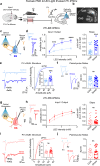
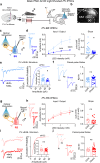
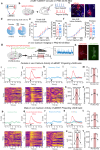

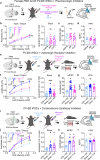
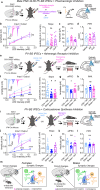
Update of
-
Acute stress causes sex-dependent changes to ventral subiculum synapses, circuitry, and anxiety-like behavior.bioRxiv [Preprint]. 2024 Aug 3:2024.08.02.606264. doi: 10.1101/2024.08.02.606264. bioRxiv. 2024. Update in: Nat Commun. 2025 Jul 1;16(1):5604. doi: 10.1038/s41467-025-60512-y. PMID: 39131353 Free PMC article. Updated. Preprint.
Similar articles
-
Acute stress causes sex-dependent changes to ventral subiculum synapses, circuitry, and anxiety-like behavior.bioRxiv [Preprint]. 2024 Aug 3:2024.08.02.606264. doi: 10.1101/2024.08.02.606264. bioRxiv. 2024. Update in: Nat Commun. 2025 Jul 1;16(1):5604. doi: 10.1038/s41467-025-60512-y. PMID: 39131353 Free PMC article. Updated. Preprint.
-
Ventral subiculum control of avoidance behavior and hypothalamic-pituitary-adrenal axis reactivity via the bed nucleus of the stria terminalis in male and female mice - ISPNE 2024 Dirk Helhammer Award.Psychoneuroendocrinology. 2025 Jan;171:107229. doi: 10.1016/j.psyneuen.2024.107229. Epub 2024 Oct 30. Psychoneuroendocrinology. 2025. PMID: 39504606
-
Lateral septum activation as a central hub for reversing chronic stress-induced novelty-avoidance.Prog Neuropsychopharmacol Biol Psychiatry. 2025 Jul 13;140:111436. doi: 10.1016/j.pnpbp.2025.111436. Epub 2025 Jul 5. Prog Neuropsychopharmacol Biol Psychiatry. 2025. PMID: 40623540
-
Behavioral interventions to reduce risk for sexual transmission of HIV among men who have sex with men.Cochrane Database Syst Rev. 2008 Jul 16;(3):CD001230. doi: 10.1002/14651858.CD001230.pub2. Cochrane Database Syst Rev. 2008. PMID: 18646068
-
Computer and mobile technology interventions for self-management in chronic obstructive pulmonary disease.Cochrane Database Syst Rev. 2017 May 23;5(5):CD011425. doi: 10.1002/14651858.CD011425.pub2. Cochrane Database Syst Rev. 2017. PMID: 28535331 Free PMC article.
References
-
- Chiba, S. et al. Chronic restraint stress causes anxiety- and depression-like behaviors, downregulates glucocorticoid receptor expression, and attenuates glutamate release induced by brain-derived neurotrophic factor in the prefrontal cortex. Prog. Neuro Psychopharmacol. Biol. Psychiatry39, 112–119 (2012). - PubMed
MeSH terms
Substances
Grants and funding
- R01NS130044/U.S. Department of Health & Human Services | NIH | National Institute of Neurological Disorders and Stroke (NINDS)
- T31KT1437/Tobacco-Related Disease Research Program (TRDRP)
- R21MH129620/U.S. Department of Health & Human Services | NIH | National Institute of Mental Health (NIMH)
- 5T32GM008497/U.S. Department of Health & Human Services | NIH | National Institute of General Medical Sciences (NIGMS)
- F30 DA057053/DA/NIDA NIH HHS/United States
- R01MH116901/U.S. Department of Health & Human Services | NIH | National Institute of Mental Health (NIMH)
- T31IP1426/Tobacco-Related Disease Research Program (TRDRP)
- R01DA054374/U.S. Department of Health & Human Services | NIH | National Institute on Drug Abuse (NIDA)
- R21 MH129620/MH/NIMH NIH HHS/United States
- R01 NS130044/NS/NINDS NIH HHS/United States
- 5T32GM007635/U.S. Department of Health & Human Services | NIH | National Institute of General Medical Sciences (NIGMS)
- T32 GM008497/GM/NIGMS NIH HHS/United States
- F30DA057053/U.S. Department of Health & Human Services | NIH | National Institute on Drug Abuse (NIDA)
- R01 MH116901/MH/NIMH NIH HHS/United States
- R01DA056599/U.S. Department of Health & Human Services | NIH | National Institute on Drug Abuse (NIDA)
- R01 DA056599/DA/NIDA NIH HHS/United States
- T32 GM007635/GM/NIGMS NIH HHS/United States
- R01 DA054374/DA/NIDA NIH HHS/United States
LinkOut - more resources
Full Text Sources
Medical

